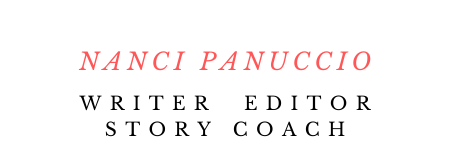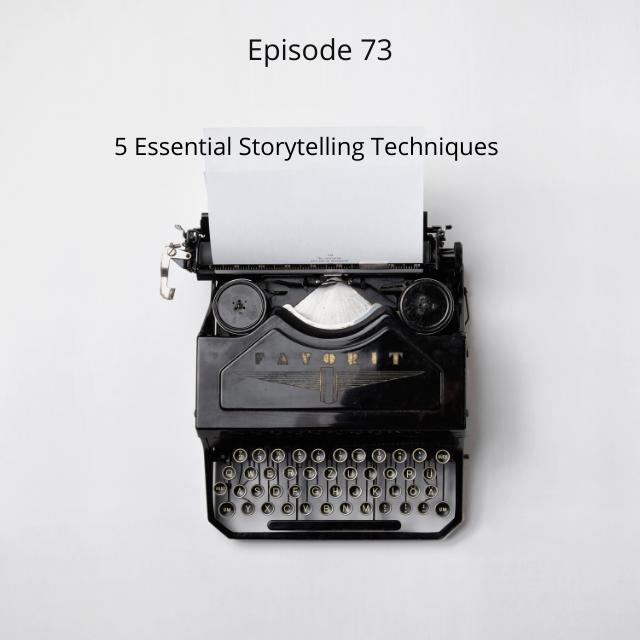Structuring you story is a challenge.
Pants around too much and you risk writing too much unnecessary stuff. Outline and you might write yourself into a corner.
And then there are all those structuring techniques. Save the Cat. The 3 Act Structure. The Five-Stage plot structure. The Hero’s Journey.
But none of these structures work without the underlying techniques that hold them up and breathe life into your story.
How can you be more efficient with structuring your story? How do you balance structure while keeping the story fresh and surprising to your reader?
In this episode, we’re going to talk about 5 essential storytelling techniques that will help you structure your story into a riveting experience for your readers.
Download as an MP3 by right-clicking here and choosing “save as.”
Here’s a glance at this episode:
[2:13] Why storytelling techniques are important
You do need structure. It’s the container for your imagination so that the reader can receive your story. These 5 storytelling techniques will not only help you bring clarity and focus to your material, it will help you structure your story more elegantly and efficiently.
[4:09] Every story in a nutshell
… is about a character who wants something and encounters obstacles before he or she gets it. A story is also a process of opening and closing story loops. Those open story loops are why you binge watch your favorite Netflix series. The brain wants to close those gaps.
You’ll learn the burning story question that keeps readers turning the page, and how to keep that story loop open.
[6:37] Three questions your story must answer in your opening
If these three questions can’t be answered in your opening pages, the reader’s going to tune out. Donald Miller, who studied screenwriting, found that if these 3 questions aren’t answered in the first 15 – 20 minutes of the film, the audience starts daydreaming. That’s because the story has already descended into noise, and will most certainly fail at the box office. Answer these 3 questions, and your story will keep readers riveted.
[7:37] Hook your character and your reader into the main action
Don’t clutter your story with backstory and exposition. That’s just noise. Cut to the good stuff. So how do you get into the action of the story sooner? Where do you start? You’ll learn an insanely simple way to introduce conflict, action, and surprise in your opening sentence and hook your reader instantly.
[13:44] Every story is about solving a problem
As soon as you resolve the problem, the story’s over. Learn about the “moment of then” and how that affects the rest of your story.
[17:58] Desire and Resistance
Desire is the engine of your plot. In every scene, in every chapter, it’s the same desire meeting the same resistance over and over again. It just shows up in different variations. So your character has this problem that he or she must absolutely solve. And each scene, each chapter brings him or her closer to or further away from solving it. Same desire meeting the same resistance over and over again.
[21:11] High stakes
In every great story, the stakes are enormous. If your character doesn’t have something of value to lose, the story’s over.
[23:17] Endings
Your character will either get what he or she wants or not. But don’t wrap up your story’s ending in a perfect bow. The reader will never buy it. Learn a simple way to create an unforgettable ending.
Stop getting stuck in the middle of your WIP.
Structure your story with more clarity, control, and confidence.
And finish faster, stronger, and better.
Click here to download your FREE 3-Act Worksheet.
Structuring you story is a challenge.
You don’t want to write too much unnecessary stuff. And you don’t want to write yourself into a corner either.
And then there are all those structuring techniques. Save a Cat. The 3 Act Structure. The Five-Stage plot structure. The Hero’s Journey.
But none of those structures work without the underlying techniques that hold them up and breathe life into your story.
How can you be more efficient with structuring your story? How do you balance structure while keeping the story fresh and surprising to your reader? In this episode we’re going to talk about 5 essential storytelling techniques that will help you structure your story into a riveting experience for your readers.
Download as an MP3 by right-clicking here and choosing “save as.”
Here’s a glance at this episode:
[2:13] Why storytelling techniques are important
You do need structure. It’s the container for your imagination so that the reader can receive your story. But structure is useless without the underlying techniques that bring it to life. These 5 storytelling techniques will not only help you bring clarity and focus to your material, it will help you structure your story more elegantly and efficiently.
[4:09] Every story in a nutshell
… is about a character who wants something and encounters obstacles before he or she gets it. A story is also a process of opening and closing story loops. Those open story loops are why you binge watch your favorite Netflix series. The brain wants to close those gaps.
You’ll learn the burning story question that keeps readers turning the page, and how to keep that story loop open.
[6:37] Three questions your story must answer in your opening
If these three questions can’t be answered in your opening pages, the reader’s going to tune out. Donald Miller, who studied screenwriting, found that if these 3 questions aren’t answered in the first 15 – 20 minutes of the film, the audience starts daydreaming. That’s because story has already descended into noise, and will most certainly fail at the box office.
[7:37] Hook your character and your reader into the main action
Don’t clutter your story with backstory and exposition. That’s just noise. So how do you get into the action of the story sooner? Where do you start? You’ve probably heard of starting in the middle of things in Medias Res or where things are already off balance. You’ll learn an insanely simple way to introduce conflict, action, and surprise in your opening sentence and hook your reader instantly.
[13:44] Every story is about solving a problem
As soon as you resolve the problem, the story’s over. Learn about the “moment of then” and how that affects the rest of your story.
[17:58] Desire and Resistance
Desire is the engine of your plot. In every scene, in every chapter, it’s the same desire, meeting the same resistance over and over again. It just shows up in different variations. So your character has this problem that he or she must absolutely solve. And each scene, each chapter brings him or her closer to or further away from solving it. Same desire meeting the same resistance over and over again.
[21:11] High stakes
In every great story, the stakes are enormous. If your character doesn’t have something of value to lose, the story’s over.
[23:17] Endings
Your character will either get what he wants or not. But don’t wrap up your story’s ending in a perfect bow. The reader will never buy it. Learn a simple way to create an unforgettable ending.

